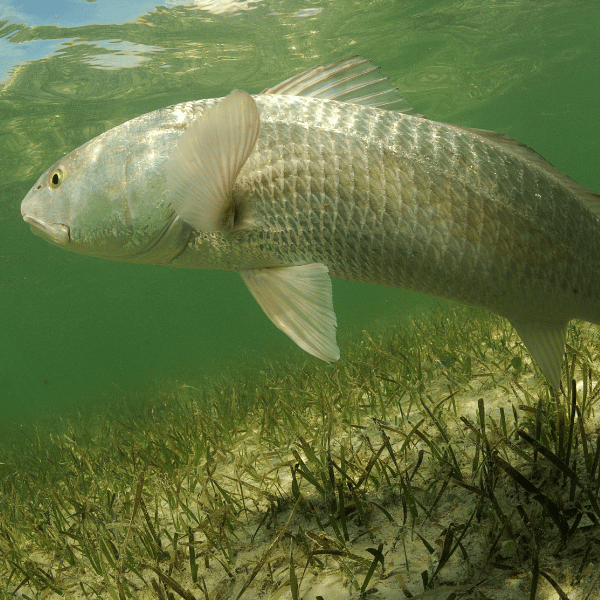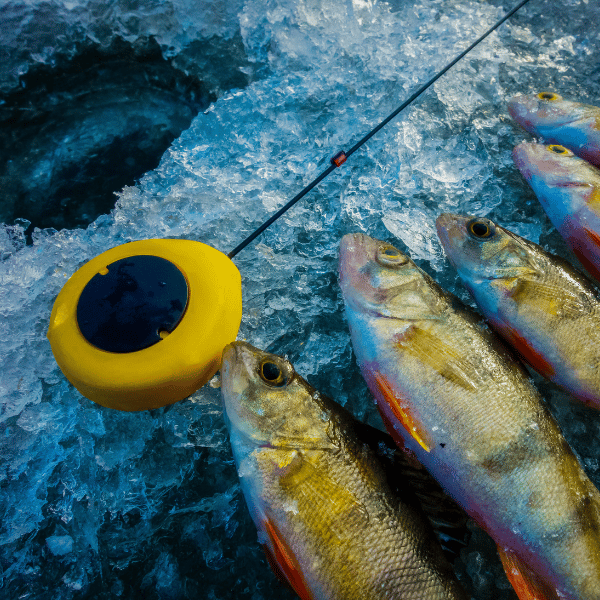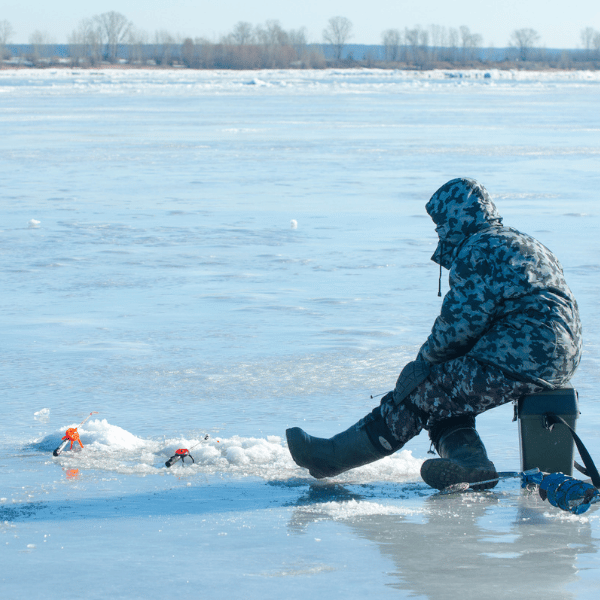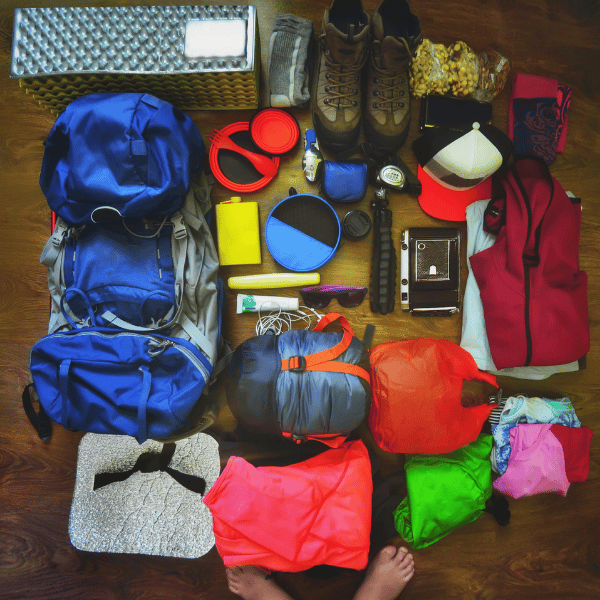How To Catch Lake Trout Ice Fishing
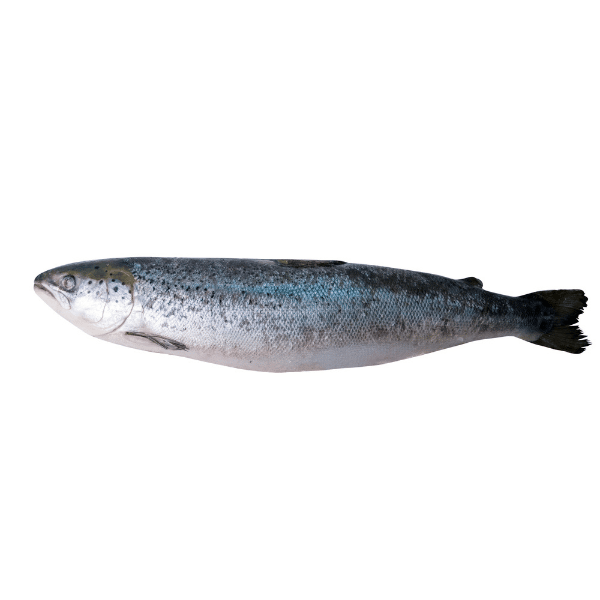
Learning how to catch lake trout ice fishing can be particularly hard. This guide will show you the best bait for lake trout fishing, what rods we recommend, our favorite jigs and lures, and then wrap it up with some tips that you’ll really want to use to your advantage.
Contents
Catch Lake Trout Ice Fishing

Lake trout are very abundant in colder waters, making them some of the most common fish to catch while ice fishing!
When ice fishing for trout, look for deep, cold water and around underwater structures. Trout are predators that prey on smaller fish. You’ll also want the right lure. Trolling is a technique that will help you catch trout as well.
Once you know where to find lake trout and what kind of jigs and lures attract them, you’ll be able to catch lake trout with no problems whatsoever!
Best Bait For Lake Trout Ice Fishing
You are going to need some good bait for catching lake trout, as not having goof lake trout bait for ice fishing can be the deciding factor between catching trout or catching nothing at all.
In this section, we’ll show you some of our recommended baits that you’ll want to use.
While reading this, keep in mind that sometimes it may be a good idea to switch it up. You’ll never know which type of bait will give you better luck over the other (not that it matters, but sometimes trout can be picky).
With that said, let’s take a look at the best baits you’ll want to consider using:
Baitfish:
Obviously, baitfish like minnow will be a suitable choice when you want to catch lake trout. Smaller bait will usually work with other fish like brook trout. You can expect the same when you’re going after lake trout as well. Make sure your baitfish are alive since trout will have no interest in eating bait that’s already dead.
Lures:
Yes, lures can still work in an ice fishing setting. And you’d be crazy not to put them to good use in the wintertime. Some of them will be durable enough to handle the cold water temperatures. Furthermore, you’ll want to use lures that are metallic and have bright colors. The brighter, the better.
Jigs:
We cannot forget about jigs. They are typically one of the best kinds of bait that veteran ice anglers use. Some of the best jigs for ice fishing include Swedish Pimples, the Rapala Jigging Rap, and others. These jigs will take on plenty of abuse, which means there’s a higher than likely chance that you’ll reuse them over and over again.
What Kinds of Jigs and Lures to Use
The kind of jig or lure you use while lake trout ice fishing can make or break your fishing trip. While white tube jigs have been very effective and popular over the years, using other soft, plastic lures in other colors as well.
Jig and lure colors that may work for lake trout ice fishing other than white include:
- Purple
- Silver
- Motor oil
- Pumpkin seed
Apart from soft plastic lures, there are a few other kinds of lures and jigs that just might do the trick!
Noise Making Lures
Lures that make some kind of sound can prove to be very effective when trying to catch lake trout. When the trout hears the sound, it might be interesting and go over to investigate, giving you a chance to jig up and down to see if they’ll bite.
However, these kinds of lures may actually scare nearby lakers off. It really depends on the particular fish’s braveness. If all else fails, it’s at least worth a try!
The best way to test out a noise-making lure is to purchase a fishing rattle. Attach it to your jig, and see if the aggressive big ones bite.
Spoon Lures
Spoon lures are another popular choice for lake trout ice fishing. These silvery lures spin around underwater and cast light in all directions, immediately catching the attention of any nearby trout. These are lures with a proven track record for getting results, so they’re definitely worth trying out.
Swimbaits
Swimbaits are another great way to confuse lake trout. They do an excellent job of mimicking the smaller fish that lakers prey on and work well in all depths of water. They even include a “tail” that makes it look like they’re swimming, and kick side to side as they fall through the water.
While plastic white and silver jigs or lures should always be your top choice, don’t be afraid to experiment with different colors and styles. Sometimes it comes down to experimenting to figure out what the lake trout want, which can change even throughout the same day.
Jig Ice Fishing Lake Trout
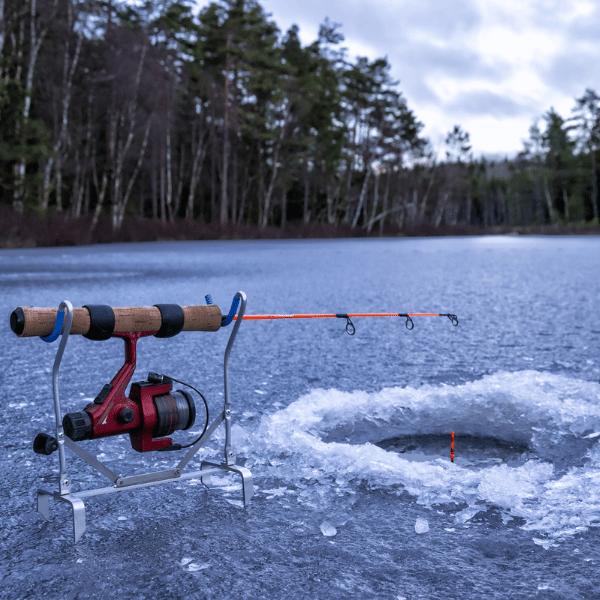
Vertical jigging for ice fishing is one of the common practices among seasoned vets. If you are more apt to use jigs for fishing lake trout, then you’ll probably want to find something that is bright in colors.
You will get the best results if the jigs are made from metals like brass. Or you can consider the following options for which types of jigging are perfect for landing that lake trout deep underneath the ice:
Tube Jigs (Pearl or White colored)
This soft-textured jig is perhaps one of the most popular on the market. It’s long, hollow, light-colored, and can move around in the water. It will resemble a Cisco, which is one of the lake trout’s favorites to eat.
Airplane Jigs
If you are looking for the closest thing to a baitfish moving around like it’s in great distress, then look no further than the airplane jigs. Typically, this is used on open waters. However, this has proved itself useful in an ice fishing setting.
Bucktail Jigs
A larger-sized jig that has white hair and a feather skirt. Like the airplane jig, it will move fast like a baitfish. And it can move quite fast. A trout will be moving after it fast (and you’ll be able to strike at any given time). If you want a jig that is guaranteed to move fast enough to draw those trout in closer, this could be the one you’re looking for.
Lipless Crankbaits
These are some of the unsung heroes of ice fishing. Typically, they are great for warmer weather fishing. But over the years, it has proven its worth as one of the undisputed champions of ice fishing.
Types Of Lake Trout Fishing Lures
What if you like lures? Not a problem. We actually have a list of them that we love for you to give a try.
Here are some of our favorites for ice fishing lake trout that you might want to try:
Rapala Rippin Rap
This lure is known for snagging the big fish during ice fishing season. This moves around so fast it can quickly get the attention of nearby fish. You’ll probably get a few more hits than you expect when you first try this out. Its white and yellowish color makes it an eye-catcher for not just lake trout but also walleye as well.
Red Eye Shad
Like the Rippin Rap, this lipless crankbait will do just fine in ice fishing. While it was originally made for bass, many ice fishing veterans decided to give it a try with lake trout. Sure enough, it worked to their advantage. It can fall down in a straight line and will less likely mess up your line whenever you drop it into your favorite fishing hole. It can move around gracefully like a ballet dancer and will do just enough to draw the attention of nearby fish.
Rapala Snap Rap
This is a new and improved design of a lure that has been around for quite a while. The only difference is that the hooks are wider and it’s even shinier than ever. The moves it makes mimics a baitfish that is in distress. And trouts love it when they see a fish smaller than them struggle to move. However, it does require a little bit more movement with your wrist. This lure is more for the seasoned vet, but it ain’t newbie proof. With practice, you’ll get the hang of mastering this kind of lure.
Williams Whitefish Spoon
The design of this kind of lure is the closest you can get to a small baitfish. The resemblance is so close it’s scary. These lures come in various lengths ranging from 3-¼ to 6 inches. So they are somewhat larger than most lures you may use when ice fishing. This will be easy to move around at a fast rate of speed without any line fouling.
Ice Fishing For Lake Trout With Tip Ups
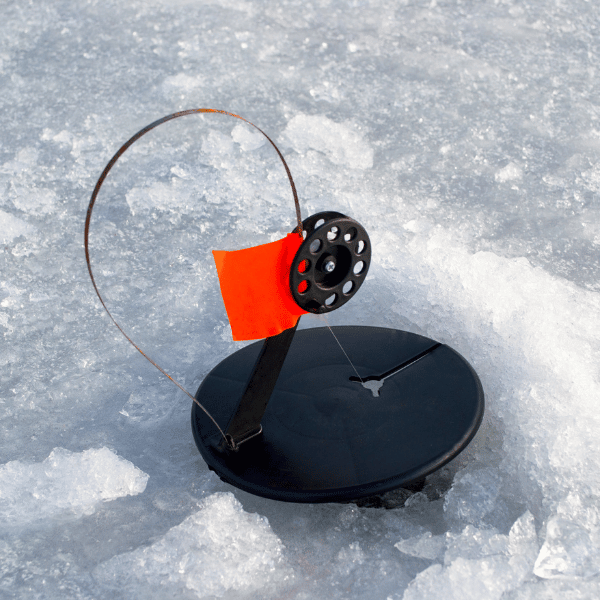
You can use tip-ups when fishing for lake trout. These will come in handy whenever you need to take on the much larger fish like walleye and lake trout. Not only are they compatible with light lines, but they work quite well with heavy ones as well.
You can choose between disc-style or rail style depending on your personal needs and preferences. What’s the difference between the two?
Disc-style tip-ups cover the hole while insulating it. Meanwhile, rail style will be useful when the weather is much colder and will keep the holes open when needed.
Test out each tip-up to see if which ones will work best for you. As far as the type of line to use, you should go heavy regardless if you are new to ice fishing or a seasoned vet.
Where to Ice Fish for Lake Trout
Lake trout, also known as “lakers,” are most often found in larger bodies of water. They love cold water, so you’ll typically have the best luck finding these fish deep below the surface (between 40-60 feet down). In the winter, however, you may have better luck finding them closer to the surface!
This is because the water is colder in the winter, so they may find the temperature in shallow waters more habitable than their typical stomping grounds, where the lack of light and below freezing air temperatures may render the water too cold for them.
As a rule of thumb, you should always try deep waters first. If you don’t have any luck there, try moving to a warmer, shallower section of the lake.
Lake Structures to Find Lake Trout
There are specific areas within a lake where you’re more likely to find lake trout. You can usually find them around underwater:
- Ledges
- Points
- Shelves
- Sunken reefs
- Bars
- Shoals
- Cliffs
Lake trout are predatory hunting fish, and strategically use the confined area provided by these structures to trap their prey. They can trap many small fish into these areas at once, and then begin feasting!
Since there will be so many small fish around during this hunt, the lakers might not even notice the difference between their prey and your fishing lure! By dropping your jig or lure in these locations, you have a good chance of catching a lake trout.
Other Ways to Find Lake Trout
If you don’t have any luck locating the underwater structures that lake trout frequent, don’t worry! There are a couple of other proven ways to locate lake trout.
Look for Fish That Lake Trout Prey On
Look for lakers in the same areas where you’d typically find the smaller kinds of fish that they feed on. These fish include:
- Ciscos
- Whitefish
- Smelt
- Perch
- Burbot
- Rainbow trout
- suckers
- Invertebrates
If you can locate and identify any of these kinds of fish, you’ll probably notice some lake trout stopping by soon! All you have to do is be patient and wait.
Underwater Structures on a Map
If you’re having trouble locating underwater structures through the ice, you may be able to locate them with a map! If you can find and read a topographical map of the lake you’re ice fishing in, you may be able to better find and utilize the underwater structures you should be targeting.
Use a Fish Finder
If you’ve exhausted all other possibilities and still cannot find any lake trout, you might have luck using a fish finder!
A fish finder uses SONAR (Sound Navigation and Ranging) to find and display the location of fish within a body of water.
Some modern fish finders even include things like a GPS, electronic compass, or radar, giving you a huge advantage over the lakers you’re trying to find. Some people consider using SONAR devices “cheating,” but they sure are effective when nothing else works!
Best Fishing Line and Reels for Lake Trout Ice Fishing
When ice fishing for lake trout, using the right line, reel, and rod can make all the difference. Because you typically need to reach very deep waters when looking for lakers, a braided, no-stretch line is often the best choice.
As far as rods and reels, try using either a baitcasting or spinning rod/reel! Outdoor News claims that baitcasting rods and reels are most appropriate for ice fishing at a depth of 50 feet or lower, while spinning rods and reels are better for shallower depths.
Tips to Catch Lake Trout Ice Fishing
If all else fails and you’re still having trouble catching lake trout while ice fishing, we’ll leave you with a few proven tips and tricks!
Ice Trolling
Trolling across the ice is a great way to entice more lake trout. Here’s how to do it:
- Have several holes drilled along a piece of structure you want to fish.
- Start at the first hole, letting your bait fall to about the bottom of the lake.
- Start to jig and reel your line in very slowly.
- If you have a fish finder or sonar, watch to see if any fish come toward your bait.
- Keep jigging and reeling in the bait until it’s almost at the surface of the water.
- If there are fish on the radar or you feel some nibbles, drop the line and repeat from Step 3.
- If there is nothing on the radar or no nibbles, you can try the hole one more time or “troll” over to the next hole.
This method lets you cover a lot of depth and area of the lake quickly, giving you a better chance of getting a bite!
Find Your Rhythm While Jigging
If you choose to jig while ice fishing, you’ll need to do so at a consistent pace. Lake trout are predators that hunt based on sight and move towards their prey based on the movement they expect it to make. If you’re jigging at an inconsistent or erratic pace, they might notice that something is up!
U.S. Anglers says you might notice the lakers bumping into your jig to check it out before actually taking a bite. If this happens, act naturally and resist the urge to pull your lineup immediately. They just might come back!
How to Catch Lake Trout FAQ
There are four types of fishing lines best suited for lake trout: monofilament, super line, fluorocarbon, and tip-up. Each type has its own best attributes. Fluorocarbon is almost invisible underwater while monofilament will hold strong even in colder temperatures.
